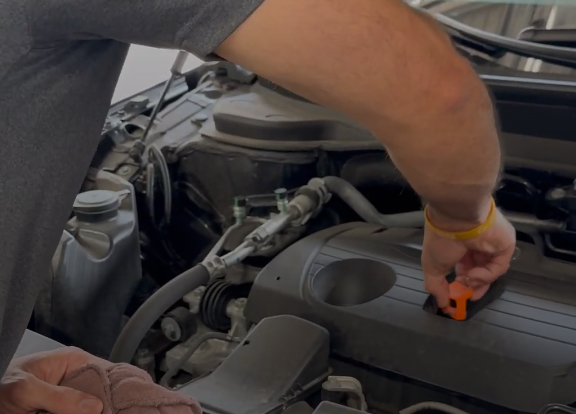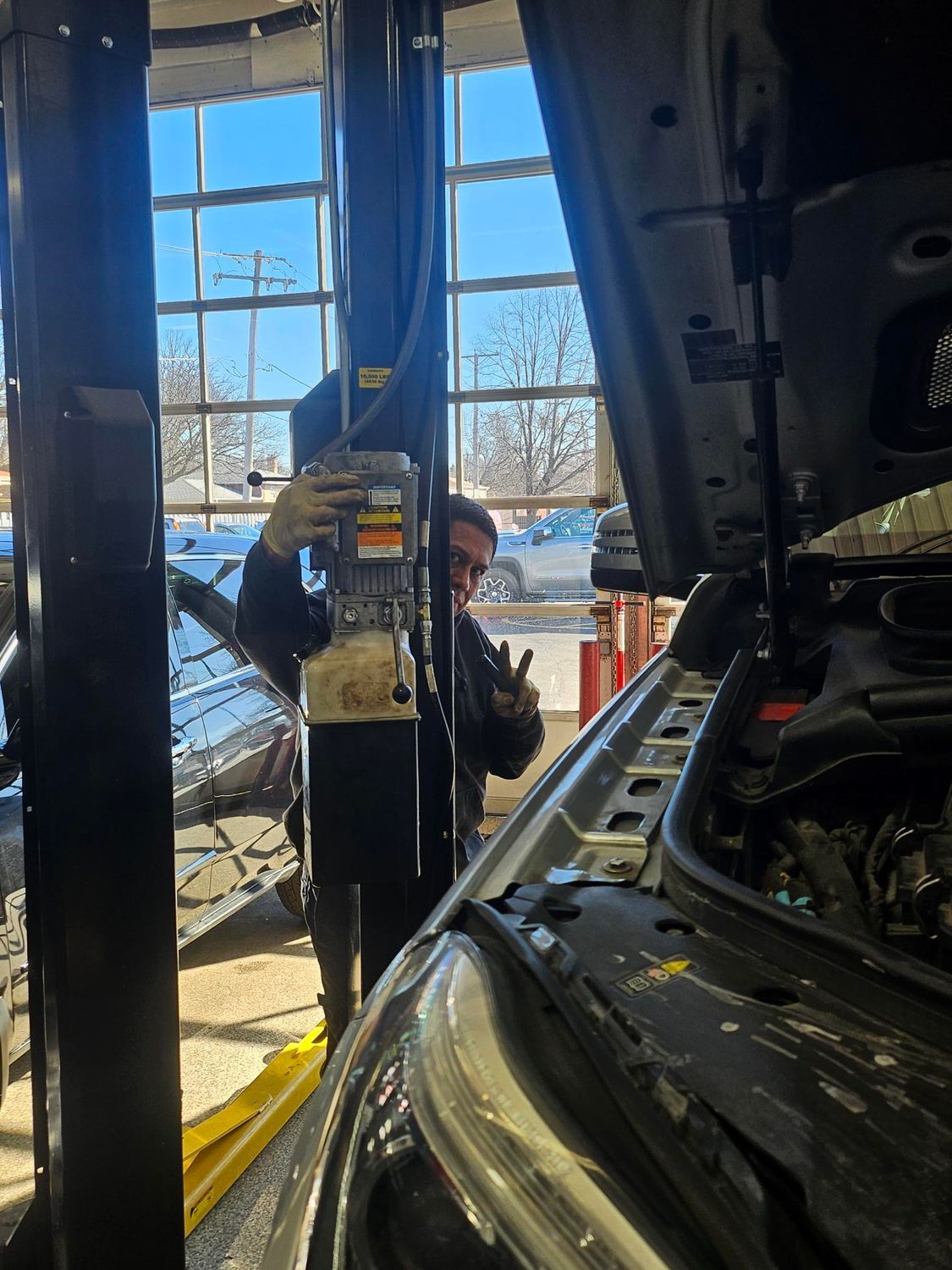Car Eco-Friendly Refrigerant Transition Guide: Understanding the Environmental Impact
Looking to make your car eco-friendlier? Transitioning to an eco-friendly refrigerant is the way to go. Say goodbye to harmful emissions and hello to a more sustainable drive. This guide will walk you through the process seamlessly, making the switch hassle-free. From benefits for the environment to cost savings, you’ll discover why this transition is a must for every conscious car owner. Get ready to reduce your carbon footprint while still enjoying a cool ride. Stay tuned for expert tips and insights that will help you navigate this green transition effortlessly.
Key Takeaways
- Environmental Impact: Transitioning to eco-friendly refrigerants in cars significantly reduces greenhouse gas emissions and contributes to a healthier environment.
- Understanding Refrigerants: Educating yourself about different types of refrigerants and their impact on the environment is crucial for making informed decisions during the transition process.
- Importance of Transition: The shift to eco-friendly refrigerants is essential to meet environmental regulations, reduce carbon footprint, and protect the ozone layer.
- Transitioning Steps: Follow a systematic approach when transitioning to eco-friendly refrigerants in vehicles to ensure a smooth and successful conversion.
- Vehicle Considerations: Take into account the compatibility of your vehicle’s system with the new refrigerants and consult with professionals for guidance on the best options.
- Safety Precautions: Prioritize safety measures during the transition process to prevent accidents and ensure proper handling of refrigerants.
- Challenges and Solutions: Anticipate potential challenges such as costs or availability of eco-friendly options, and seek solutions to overcome these obstacles effectively.
- Benefits of Upgrading: Enjoy benefits such as improved cooling efficiency, extended system lifespan, and compliance with environmental standards by upgrading to eco-friendly refrigerants.
Environmental Impact
Greenhouse Emissions
Switch to eco-friendly refrigerants like 1234YF to reduce greenhouse gas emissions significantly. Lower your vehicle’s carbon footprint by making the transition. Combat global warming with low-GWP refrigerants.
AC Refrigerants Role
Refrigerants play a crucial role in vehicle air conditioning systems. They impact system efficiency and environmental friendliness. Choosing the right refrigerant is vital for optimal AC performance.
Car Manufacturers Duty
Car manufacturers have a responsibility to promote eco-friendly practices through refrigerant choices. Leading manufacturers are adopting 1234YF in new models. Their selection of refrigerants drives sustainability efforts.
Understanding Refrigerants
Traditional vs Eco-Friendly
Switching from traditional refrigerants like R-134a to eco-friendly options such as 1234YF is crucial for reducing environmental harm. While R-134a contributes to ozone depletion, 1234YF has a significantly lower global warming potential.
The transition to eco-friendly refrigerants not only benefits the environment but also enhances cooling efficiency in vehicles. By choosing 1234YF over R-134a, you can contribute to a healthier atmosphere and optimize your vehicle’s performance.
1234YF Explained
Functionality
1234YF offers efficient cooling performance in automotive AC systems, ensuring optimal temperature regulation. Its chemical composition allows for effective heat transfer, maintaining comfortable interior conditions while minimizing environmental impact.
Compared to older alternatives, 1234YF stands out for its superior functionality and eco-friendliness. The unique properties of this refrigerant enable it to deliver reliable cooling without compromising sustainability.
Benefits
Transitioning to 1234YF brings multiple advantages, including reduced greenhouse gas emissions and improved energy efficiency. Embracing this eco-friendly option aligns with sustainable practices, promoting a greener future for both the planet and your vehicle.
By using 1234YF, you not only reduce your carbon footprint but also ensure long-term benefits for the environment and your vehicle’s longevity.
Alternatives Overview
Exploring various eco-friendly refrigerant alternatives allows you to make an informed decision based on your specific needs. Different options offer distinct features and benefits, catering to diverse requirements and preferences.
Comparing the characteristics of different eco-friendly refrigerants helps in selecting the most suitable option for your vehicle’s air conditioning system. Understanding the key differences between 1234YF and other alternatives enables you to choose a refrigerant that best meets your sustainability goals.
Importance of Transition
Environmental Benefits
Using 1234YF offers significant advantages, including lower Global Warming Potential and decreased emissions. This eco-friendly refrigerant plays a crucial role in preserving the environment by reducing harmful greenhouse gases. Transitioning to 1234YF is a positive step towards combating climate change.
Vehicle Impact
Transitioning to 1234YF positively impacts your vehicle’s performance and sustainability. By using eco-friendly refrigerants, you can improve the longevity and efficiency of your vehicle’s AC system. Switching to 1234YF also helps in reducing the environmental footprint of your vehicle.
Regulatory Policies
Being aware of regulatory requirements concerning refrigerant use in vehicles is essential. Compliance with environmental regulations significantly influences the choice of refrigerants for automotive AC systems. Regulatory policies play a pivotal role in propelling the shift towards eco-friendly refrigerants like 1234YF.
Transitioning Steps
Identifying Needs
Identify the specific needs of your vehicle regarding refrigerant type and environmental impact. Understand the significance of evaluating these requirements to ensure optimal performance and environmental responsibility. Make an informed decision based on your vehicle’s specifications and environmental considerations.
Consider the current refrigerant used in your vehicle to determine if a transition to 1234YF is necessary. Assess the phase of your current refrigerant system and its impact on the environment. This evaluation will guide you in making a sustainable choice for your vehicle’s refrigerant needs.
Understanding how assessing your vehicle’s requirements can guide you in selecting the right refrigerant option is crucial. Take into account factors such as compatibility, efficiency, and environmental impact when choosing an eco-friendly refrigerant like 1234YF. Ensure that the transition aligns with both your vehicle’s needs and environmental goals.
Selecting Eco-Friendly Options
Consider various factors influencing the selection of eco-friendly refrigerants like 1234YF for your vehicle. Evaluate aspects such as environmental benefits, cost-effectiveness, and availability when choosing the most suitable option. Make a conscious decision that promotes sustainability while maintaining optimal performance.
Evaluate the benefits and compatibility of different eco-friendly options available in the market. Compare factors such as cooling efficiency, global warming potential, and overall impact on the environment. Choose a refrigerant that not only meets your vehicle’s requirements but also contributes to reducing greenhouse gas emissions.
Understand the importance of selecting the most suitable eco-friendly refrigerant based on your vehicle’s needs. Prioritize options that offer high energy efficiency, low environmental impact, and long-term sustainability. By selecting the right refrigerant, you can enhance your vehicle’s performance while minimizing its carbon footprint.
Professional Assistance
Seek professional services from experts like Ice Cold Air for guidance on transitioning to eco-friendly refrigerants. Benefit from their expertise in handling refrigerant transitions efficiently and effectively. Professional assistance ensures a smooth switch to 1234YF without compromising your vehicle’s AC system.
Explore the range of services provided by professionals to facilitate a seamless transition process. From initial assessment to installation and maintenance, professionals offer comprehensive support throughout the entire phase of transitioning to eco-friendly refrigerants. Relying on expert guidance guarantees optimal performance and environmental sustainability for your vehicle’s AC system.
Understand the importance of professional assistance in optimizing the performance and sustainability of your vehicle’s AC system during this critical phase. Expert intervention ensures that all aspects of transitioning to eco-friendly refrigerants are handled with precision and care, promoting long-term efficiency and environmental responsibility.
Vehicle Considerations
Compatibility Check
Conduct a compatibility check to ensure that your vehicle can effectively transition to using 1234YF. Verify compatibility between your car and eco-friendly refrigerants to prevent any issues. Checking compatibility is crucial for a smooth transition.
Maintenance Requirements
Learn about the maintenance requirements when using eco-friendly refrigerants like 1234YF in your car. Key practices are essential for optimal AC system performance with 1234YF. Regular maintenance extends the lifespan of your vehicle’s AC system.
Cost Implications
Evaluate the cost implications of transitioning to eco-friendly refrigerants such as 1234YF for your car. Consider initial investment and long-term savings with 1234YF. Understanding cost implications aids in making an informed decision on refrigerant transition.
Safety Precautions
Handling Refrigerants
Refrigerants like 1234YF require specific handling procedures to ensure safety. Always wear appropriate protective gear.
Follow safety precautions meticulously to avoid accidents when working with eco-friendly refrigerants. Mishandling can lead to serious consequences.
Correct procedures are vital for both safety and efficiency when dealing with refrigerants. Ensure proper ventilation during handling.
Installation Concerns
Transitioning to eco-friendly refrigerants such as 1234YF in your vehicle may raise installation concerns. Seek professional help for a smooth transition process.
Understanding the installation process is crucial for a successful switch to eco-friendly refrigerants. Address any challenges promptly.
Smooth transition hinges on addressing installation concerns effectively. Proper installation ensures optimal performance of eco-friendly refrigerants.
Challenges and Solutions
Technical Hurdles
To transition to eco-friendly refrigerants like 1234YF, you may encounter technical challenges. Upgrading to 1234YF in your vehicle requires overcoming these hurdles. Addressing these obstacles is crucial for a successful switch.
Common technical challenges include ensuring compatibility with existing systems and components. Upgrading to 1234YF might require modifications due to its different properties. Understanding these changes is vital for a smooth transition process.
One solution is to work with certified technicians who have experience in handling eco-friendly refrigerants. Their expertise can help navigate the complexities of the transition. Proper training and guidance are essential for a seamless upgrade.
Cost Management
When shifting to eco-friendly refrigerants such as 1234YF, effective cost management is key. Implementing strategies to control expenses during the transition is crucial for a budget-friendly shift. Balancing costs while ensuring quality is essential.
One approach is to conduct a thorough cost analysis before beginning the transition process. Identifying potential expenses and finding ways to minimize them can streamline the switch. Prioritizing cost-effective measures can make the adoption of eco-friendly practices more feasible.
- Conduct a cost-benefit analysis before proceeding.
- Seek out rebates or incentives that can offset initial costs.
- Consider long-term savings from improved efficiency with eco-friendly refrigerants.
Awareness and Education
Raising awareness about transitioning to eco-friendly refrigerants like 1234YF is vital for a sustainable future. Educating yourself and others on the benefits of low-GWP refrigerants fosters understanding and support for eco-friendly initiatives within the automotive industry.
Educational campaigns can highlight the environmental impact of traditional refrigerants, motivating individuals to make the switch. Collaborating with industry experts and organizations can amplify awareness efforts, reaching a wider audience.
- Organize workshops or seminars on eco-friendly refrigerants.
- Share success stories of businesses that have adopted sustainable practices.
- Collaborate with environmental groups to advocate for eco-friendly policies.
Benefits of Upgrading
Reduced Emissions
Choosing eco-friendly refrigerants like 1234YF for your vehicle contributes significantly to reducing emissions. Transitioning to low-GWP refrigerants decreases greenhouse gas emissions, benefiting the environment and climate. The impact of reduced emissions from using eco-friendly refrigerants is crucial for a sustainable future.
Enhanced Efficiency
Switching to eco-friendly refrigerants such as 1234YF improves the efficiency of your vehicle’s AC system. By using 1234YF, you can enhance the overall performance and cooling capabilities of your vehicle. The benefits of enhanced efficiency translate into improved comfort and sustainability with eco-friendly refrigerants.
Long-term Savings
Transitioning to eco-friendly refrigerants like 1234YF enables you to achieve long-term savings. Using 1234YF can lead to reduced maintenance costs and increased energy efficiency over time. Embracing eco-friendly refrigerants not only benefits the environment but also offers financial advantages through long-term savings.
Final Remarks
You now grasp the significance of transitioning to eco-friendly refrigerants in your vehicle. Understanding the environmental impact, the importance of this shift, and the benefits it offers should motivate you to take action. By following the outlined steps, considering your vehicle’s needs, and adhering to safety precautions, you can smoothly navigate this transition.
Make a conscious choice to contribute positively to the environment and enjoy the long-term benefits of an eco-friendly refrigerant in your car. Start the process today and be part of a sustainable future for generations to come.
Frequently Asked Questions
What are the environmental impacts of transitioning to eco-friendly refrigerants in cars?
Transitioning to eco-friendly refrigerants reduces greenhouse gas emissions and ozone depletion, contributing positively to the environment by promoting sustainability and reducing the carbon footprint of vehicles.
How can I ensure the safety of transitioning to eco-friendly refrigerants in my vehicle?
Follow manufacturer guidelines, consult with certified professionals, ensure proper disposal of old refrigerants, and conduct regular maintenance checks to guarantee a safe transition process without compromising your safety or vehicle performance.
What are the benefits of upgrading to eco-friendly refrigerants in cars?
Upgrading to eco-friendly refrigerants enhances energy efficiency, prolongs the lifespan of your vehicle’s air conditioning system, reduces maintenance costs, and improves overall air quality inside the car for a healthier driving experience.
What challenges may arise during the transition to eco-friendly refrigerants in vehicles?
Common challenges include compatibility issues with older vehicle models, availability of specific refrigerants, potential leaks due to system modifications, and varying regulations across regions. However, these challenges can be overcome with professional guidance and proper planning.
How do different types of vehicles impact the transition process to eco-friendly refrigerants?
The transition process may vary based on vehicle type (electric vs. combustion engine), size, age, and usage patterns. Electric vehicles may have different requirements compared to traditional combustion engine vehicles, necessitating tailored solutions for a successful transition.













